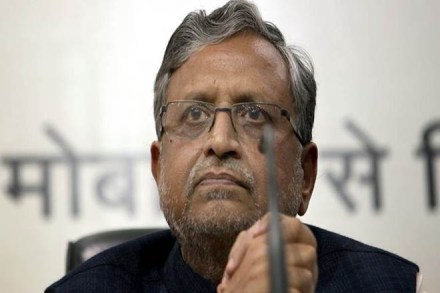In an interview, Bihar deputy chief minister and finance minister Sushil Kumar Modi speaks to FE’s Sumit Jha on the big decline in the state’s tax revenue in April-May period and the challenges being faced by the state due to a potential rise in Covid-19 cases once migrant labourers return to the state in large numbers. Edited excerpt:
What is the revenue collection trend for Bihar in April?
We are looking at about 20% of “own tax” revenue collection in April compared with the collection in the same period a year ago. This includes GST portion as well as proceeds from state’s taxes like value added tax and other taxes not subsumed under GST (goods and services tax). The trend can be extrapolated from the fact that only about 7 lakh returns have been filed under GST so far. (This is comparable with around 80 lakh returns that are normally filed at the end of each month.)
But GST revenue would be for transactions in March which was a normal month except for the last week when lockdown was imposed.
GST revenue accruing in April would correspond to sales in March but bigger taxpayers (with annual turnover above Rs 5 crore), who contribute substantially to the GST collection, are allowed to file returns for March till May 5 (as opposed to April 20), so all the tax payment may not flow in April. Further, late filers have been allowed a concessional regime of 9% interest on tax amount as opposed to 18% earlier without any late fee and penalty. This would facilitate taxpayers with cash flow issues to delay tax payment if needed.
When do you see revenue collection coming back to previous level?
The revenue situation will only get worse next month as the lockdown in the whole of April would be reflected in collections in May.
Is there any fiscal relief you have sought from the Centre?
We have used Rs 1,000 crore for loan repayment that had come due on April 28. This amount came from Rs 7,000 crore of ‘sinking fund’. (This amount was deducted from Bihar at the end of FY20 in the final tax devolution analysis to make adjustment for the excess devolution payment made to the state under devolution entitlement in FY 19. However, upon states’ request in the prevailing condition, the Centre and RBI allowed states to raise loan equivalent to this amount. Further, the states are also eligible to use a portion of this ‘fund’ for loan repayment.) We have now written to finance ministry to seek permission if a larger portion of this fund could be utilised for loan repayment. If allowed, this would ease the burden on our finances to a certain extent.
Is there a state-specific plan to exit the lockdown after May 4?
Our exit plan from the lockdown will align with what the Central government lays down. The situation would be clearer closer to May 4 but its likely to revolve around relaxing norms in green and orange zones.
Is there any measure Bihar can take to boost revenue collection once the pandemic is over?
We have assembly election this year which constrains us further from taking any revenue mobilisation steps. Even otherwise, it is hard to see how we can raise taxes once the pandemic is over as businesses would need more support and higher taxation would defeat the purpose of revival. Rather, we estimate that expenditure would go up and fiscal deficit could touch 4% of states GDP in the current fiscal.
How severe is the threat of pandemic in Bihar at this stage?
We are doing reasonably well but with migrant labour now being able to take buses and return home from different states, we have a new challenge in monitoring and preventing any potential spread through these new arrivals.
Will Bihar be suspending hike in dearness allowance (DA) to employees?
We haven’t taken a decision on this yet but states usually follow Centre’s lead on DA.
